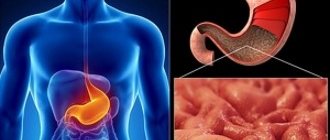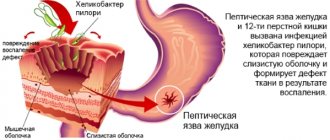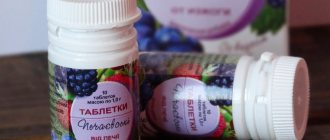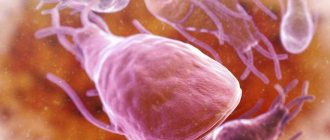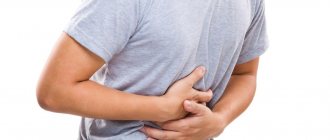To eliminate digestive problems, a gastric collection is used, which one should you choose: 1, 2 or 3?
There are several types of them, they consist of selected medicinal herbs. The drug is affordable.
The site provides reference information. Adequate diagnosis and treatment of the disease is possible under the supervision of a conscientious doctor. Any medications have contraindications. Consultation with a specialist is required, as well as detailed study of the instructions! Here you can make an appointment with a doctor.
Its effect is that under its influence gastric juice is intensely secreted, medicinal herbs soothe, relieve inflammation and have a number of other therapeutic effects.
For what diseases is gastric collection prescribed?
There are a number of diseases in which such a collection can have a positive effect.
These include:
Find the answer
Are you having any problem? Enter “Symptom” or “Name of the disease” into the form, press Enter and you will find out all the treatment for this problem or disease.
- Inflammatory diseases of the gallbladder, bile ducts;
- Gallstones;
- Biliary or intestinal colic;
- Flatulence;
- Constipation;
- Irritable bowel syndrome;
- Biliary dyskinesia;
- Pain in the stomach;
- Functional changes in the functioning of the biliary tract occurring after surgery.
Often #1 is attributed during gastritis.
The treatment method quickly has a positive effect due to the complex of medicinal plants. This remedy should be taken only at the initial stage of the disease; if a person has an advanced phase, then collection No. 2 is suitable for him, which is taken if the patient has low acidity, or collection No. 3 - for high acidity.
Chemical and medicinal composition
Which gastric collection should I choose: 1,2,3?
Their compositions are similar to each other, differing due to some ingredients. The content of collection No. 1 is enriched with:
- Plantain;
- St. John's wort;
- knotweed;
- Calamus root;
- Calendula petals;
- Millennium;
- Horsetail;
- Melissa;
- Ivan-tea;
- Corn silks;
- Chamomile;
- Peppermint;
- Immortelle flowers;
- Stinging nettle.
The ingredients that are part of collection No. 1 and No. 2 are similar, No. 2 differs:
- Wild strawberry leaves;
- Rosehip;
- Black currant leaves;
- Dill seeds;
- Wormwood;
- Elecampane root;
- Hop cones;
- Valerian root.
Collection 3 contains:
- Calamus root;
- Peppermint leaves;
- Valerian root;
- Nettle leaves;
- Buckthorn bark.
Reviews
Tatyana, 47 years old, Moscow: I have been suffering from gastritis for a long time. The last time I had an exacerbation, I took a course of treatment. The doctor recommended drinking the monastery collection afterward. From the instructions I saw that this is a good tea. The unique composition and safety make it simply ideal in treating my illness. I never had any side effects. As soon as the pain, heartburn, and belching begin to return, I start brewing this tea and the discomfort quickly passes.
Lyudmila, 43 years old, St. Petersburg: I prefer to use natural remedies in treatment. I have been worried about gastritis for a long time; when it worsens, pain, heartburn, belching, and an unpleasant taste in the mouth appear. The doctor recommended that I take a stomach preparation. During gastroscopy it was discovered that I have gastritis with low acidity. The medicine consisted of strawberry leaves, black currants, wormwood, dill, valerian root, elecampane, rose hips and hop cones.
Oksana, 47 years old, Orel: I heard about the healing properties of monastery tea a long time ago, but I thought it was all a scam. At an appointment with a gastroenterologist, I decided to find out if this was true. The doctor said that this is an effective medicine that will help me cope with pain, heartburn, nausea and bowel disorders. I am satisfied with the result; the exacerbation of gastritis quickly went into remission. I started treatment after taking the prescribed medications.
So, gastric preparations are an effective remedy in the fight against pathologies of the digestive tract. Each product has its own unique composition, as well as characteristics of use and preparation. Treatment should be carried out under the supervision of a specialist.
Such fees do not replace primary treatment, but are only auxiliary assistance. They consist of natural ingredients that enhance each other's effects. Is it possible to combine high efficiency in the treatment of gastrointestinal diseases, safety and accessibility? Yes, if we are talking about gastric collections!
Healing properties of herbs
The healing properties of herbal infusions include:
- Accelerated wound healing;
- Suppression of the fermentation process;
- Normalizing the functioning of organs such as the stomach and intestines;
- Elimination of belching and heartburn.
Medicinal herbs can be taken in combination, that is, together with chemical medications, independently.
If we talk about the medicinal properties of each of the collections separately, then No. 1 has the following properties:
- Hemostatic;
- Anti-inflammatory;
- Eliminates spasms.
If we talk about collection No. 2, then its healing properties include:
- Enveloping;
- Hepatoprotective;
- Antispasmodic;
- Sedative;
- Anti-inflammatory.
A decrease in hypersecretion, normalization of acid formation in the stomach, healing of erosive and ulcerative pathologies, improvement of the digestive process, enveloping properties.
Collection No. 3 has the following actions:
- Choleretic;
- Anti-inflammatory;
- Antispasmodic;
- Laxative.
Monastic fee
Herbal mixture No. 17 was created according to a monastery recipe. The unique composition helps normalize digestive processes. There are absolutely no chemical compounds in it. The plant origin of monastery tea ensures safety during the treatment period, which cannot be said about synthetic products.
Medicinal herbs are collected by hand. They are dried using a special technology. You can drink tea every day; it does not cause any side effects. The monastic collection helps achieve the following therapeutic effects:
- pain relief;
- elimination of heartburn, belching, unpleasant taste in the mouth;
- choleretic effect;
- relief of the inflammatory reaction;
- restoration of enzymatic activity;
- improved appetite;
- normalization of digestion and absorption of food;
- improvement of metabolic processes.
Monastic tea is often prescribed for gastritis, pancreatitis, colitis, and peptic ulcers. The therapeutic effect is due to the presence of such essential components:
- calendula has an antiseptic and anti-inflammatory effect. It strengthens the immune system and relieves constipation. Calendula has a healing effect even for peptic ulcers;
- Flax seeds have anti-inflammatory and analgesic effects. They envelop the gastric mucosa and protect it from the aggressive effects of acids;
- Rose hips are rich in vitamins and microelements. It has a choleretic effect and also normalizes the functioning of the entire digestive tract;
- St. John's wort promotes wound healing, improves appetite and normalizes acidity levels;
- cudweed relieves inflammation, painful outbreaks and spasms;
- wormwood has disinfecting properties, it even fights parasites;
- horsetail heals wounds and ulcers;
- Yarrow flowers have a tonic effect. They eliminate flatulence, and also normalize the production of gastric juice and the evacuation of bile secretions;
- peppermint has a pronounced analgesic effect. It eliminates the processes of rotting and fermentation. Mint can fight nausea, vomiting and diarrhea.
Monastic tea eliminates unpleasant symptoms of existing digestive pathologies
Patterns of use and mechanism of action
Each collection has different consumption patterns. Healing fees should be taken:
- No. 1 you need to take one tablespoon three times a day 30 minutes before meals.
- Collection No. 2 is also taken 200 ml 3 times throughout the day, 30 minutes before sitting down to eat.
- Collection No. 3 is consumed half a glass twice a day.
The mechanism of action of any of the listed medicinal preparations is:
- A destructive effect on harmful microorganisms that cause this or that disease and prevent the normalization of the stomach.
- Elimination of factors that cause dysbiosis, influence the creation of putrefactive and fungal flora.
- Antispasmodic and analgesic properties.
- A relaxing effect on the gastric mucosa.
How to use and cook correctly
Each collection is used differently, but its method of preparation also differs.
Take this into account, because otherwise the treatment will not bring the desired effect.
- To prepare collection No. 1, you need to take a tablespoon of this product and pour 500 ml of boiling water. You should wait 3 hours until the broth is infused and you can take a tablespoon before meals.
- To prepare medicinal collection No. 2, you should take 2 tbsp. spoons of the specified mixture and pour 500 ml of boiling water over it. Then the drink should brew for 3 hours, then it is filtered and taken in a glass before eating.
- Preparation of collection No. 3 requires the use of a steam bath, in which one tbsp is brewed. spoon of raw materials filled with cold water in the amount of 200 ml. The product should remain above the steam for at least 30 minutes. Then the decoction should infuse, for this 40 minutes is enough and it can be consumed 100 ml at a time. In total, you need to take this medicine 2 times a day.
Sometimes you need to take a gastric collection in the form of an infusion:
- Take 1 g of the mixture in dry form and pour boiling water (200 ml). The product should not be infused for long; 20 minutes is enough.
- The infusion should be filtered and consumed twice a day, half a glass. The infusion should be taken during or after meals. The course of treatment should last exactly 30 days, then you need to take a break.
Rules for preparation and use
Previously it was believed that the beneficial properties of medicinal plants were preserved only when using a water bath. However, it was found that even boiling is an acceptable method of preparing dry raw materials. Experts recommend infusing plants in a thermos. Be that as it may, it is important to provide the infusion with sufficient oxygen. Otherwise it will simply go bad. The medicinal infusion can be stored in the refrigerator, but no more than two days.
Important! Treatment with drugs during pregnancy should be carried out under the strict supervision of a physician.
Doctors usually recommend taking gastric infusions for three weeks without breaks. Then you can take a seven-day break and carry out treatment again. The next course is allowed to be carried out no earlier than six months later.
You should only take a filtered solution. It is best to take the product an hour before the main meal. Each of the collections differs not only in the mechanism of action, method of use, but also in the rules of preparation.
Harm, side effects and contraindications
It should not be taken:
- Women who are breastfeeding;
- If the patient takes this or that medicine;
- During susceptibility to those plants that are part of the collection.
Possible side effects:
- Heartburn;
- Drowsiness;
- Problems with stool.
If a person does not adhere to the rules for using the decoction, then an overdose may occur, which will only intensify possible adverse reactions.
It is important not to take this remedy without first reading the instructions, but it is better not to self-medicate, but to consult a doctor who will tell you how to use the medicinal mixture correctly and will help you cope with a particular disease.
Similar drugs:
- Dexamethasone Solution for intravenous and intramuscular administration
- ARTRADOL (Artradol) Lyophilisate for the preparation of solution for injection
- Dicloberl N 75 (Dicloberl N 75) Solution for injection
- Calcium gluconate Chewable tablets
- Nimesil Granules for the preparation of suspension for oral administration
- Next Oral tablets
- Dimexid Solution for local and external use
- Pulmicort Suspension for inhalation
- Ibufen Oral suspension
- Panoxen Oral tablets
** The Drug Directory is intended for informational purposes only. For more complete information, please refer to the manufacturer's instructions. Do not self-medicate; Before starting to use the drug Gastrointestinal collection, you should consult a doctor. EUROLAB is not responsible for the consequences caused by the use of information posted on the portal. Any information on the site does not replace medical advice and cannot serve as a guarantee of the positive effect of the drug.
Are you interested in the drug Gastrointestinal Collection? Do you want to know more detailed information or do you need a doctor's examination? Or do you need an inspection? You can make an appointment with a doctor - the Euro lab is always at your service! The best doctors will examine you, advise you, provide the necessary assistance and make a diagnosis. You can also call a doctor at home . Euro lab clinic is open for you around the clock.
** Attention! The information presented in this medication guide is intended for medical professionals and should not be used as a basis for self-medication. The description of the drug Gastrointestinal collection is provided for informational purposes and is not intended for prescribing treatment without the participation of a doctor. Patients need to consult a specialist!
If you are interested in any other drugs and medications, their descriptions and instructions for use, information about the composition and form of release, indications for use and side effects, methods of use, prices and reviews of drugs, or you have any other questions and suggestions - write to us, we will definitely try to help you.
Gastrointestinal collection “Fitogastrol”
Problems caused by disturbances in the gastrointestinal tract cause discomfort and a lot of trouble. The most common manifestations will be flatulence, bloating, pain and a feeling of heaviness, flatulence, and constipation.
These problems bring unpleasant sensations and can disrupt your plans. To get rid of them, drug treatment is prescribed, but another method is also being popularized - treatment with herbal teas, the main position being occupied by “Fitogastrol”. The drug contains 5 medicinal herbs that have a beneficial effect on the functioning of the intestines, relieve spasms, and have anti-inflammatory and antimicrobial effects.
The crushed mixture of herbs is placed in bags similar to ordinary tea bags. One such package must be placed in a glass bowl or dish coated with enamel, poured over a mug of boiling water, covered with a lid, plate or thick towel and allowed to stand for fifteen minutes. After the time has passed, the bag of herbs is removed, and the remaining volume of the infusion is added to the two hundred milliliter mark using boiled water. Take half a glass three times a day, half an hour before meals.
There is another form of release of the designated collection; there are no bags, but there is a total mass of powdered herbs. Then you should measure one tbsp. Place the mixture in a similar container as in the previous case and add a mug of hot water, but not boiling water. Cover and heat further in a water bath for fifteen minutes so that some of the broth evaporates. Then you need to let the infusion cool to room temperature. Then filter the liquid and add boiled water to the resulting volume to the two hundred milliliter mark. Take one third of a mug three times a day, half an hour before meals.
Due to the fact that the “Fitogastrol” collection is a complex of medicinal herbs that have different effects on the body and can be perceived differently individually, you should consult a doctor before use.
Herbal teas for gastritis with high acidity
For every disease that occurs in the body, there is a certain complex of medicinal plants that help cope with it.
Since gastritis is an inflammatory process that forms in the mucous membrane, treatment will be based on eliminating inflammation; those herbs that have an anti-inflammatory, enveloping effect should be used.
There is a list of plants that cope with gastritis with high acidity - chamomile, calendula, dandelion, burdock roots, coltsfoot, plantain and St. John's wort.
There are mixtures of herbs that help with the indicated pathology:
- 3 tbsp. spoons of dried herbs St. John's wort, chamomile and yarrow are combined with one spoon of celandine. Mix the components to a homogeneous powder, measure one tbsp. spoon from the resulting mass and pour a cup of boiling water. Let it brew for half an hour, after this time the infusion is filtered and drunk a third of a glass three times a day fifteen minutes before meals.
- To 2 table. spoons of centaury and 2 table. add one tablespoon of peppermint. spoon of St. John's wort, chop and mix thoroughly. Take one table. spoon of the resulting mixture and pour a cup of boiling water, leave the infusion for an hour, then filter and consume 100 fifty milliliters daily 3 times thirty minutes before meals.
- These manipulations can be performed with a number of herbs, taking them in a one-to-one ratio. The preparation method and method of consumption will be identical to previous recipes.
There are specialized collections that are aimed at suppressing gastritis with high acidity - this is collection No. 1, collection No. 2, collection No. 3 and No. 4 against the form of gastritis with an increased acidity level.
The presented mixtures can be purchased at a pharmacy or made yourself, but for this you need to have a kitchen scale to accurately measure the required herb. Since each mixture of herbs under a certain number has an individual list of constituent substances, only a doctor can prescribe the necessary collection.
Indications
There are a number of diseases in which gastric collection can have a positive effect. Doctors prescribe it in the following cases:
- cholecystitis, biliary dyskinesia;
- cholelithiasis;
- intestinal colic;
- biliary colic;
- constipation;
- liver diseases;
- increased gas formation;
- gastralgia;
- peptic ulcer;
- gastritis;
- pancreatitis - inflammation of the pancreas;
- irritable bowel syndrome;
- postoperative period.
Gastric preparations are taken both as monotherapy and in combination with chemicals. They are considered one of the most effective methods for treating gastrointestinal pathologies.
The therapeutic effect of gastric preparations is due to the following effects on the body:
- stopping fermentation processes;
- wound healing;
- cleansing and removing waste and toxins;
- normalization of digestive processes;
- elimination of heartburn and belching.
Important! Intestinal preparations can be used not only for the treatment of existing pathologies, but also for prevention purposes. They can be made individually for a person, based on existing pathologies.
The choice of medicinal preparation largely depends on the level of stomach acidity. Those herbs that are effective for hyperacid gastritis, that is, inflammation with increased production of hydrochloric acid, can even be harmful in the hypoacid form. With excessive production of gastric juice, patients are bothered by sour belching, heartburn, pain in the epigastric region, and increased appetite.
To combat hyperacid gastritis, medicinal herbs with enveloping and astringent properties are used. The composition of the collection must necessarily include calendula, dandelion, burdock root, plantain, coltsfoot, and chamomile. You can take such remedies in the form of tea. To do this, dry raw materials are first brewed, settled and filtered.
Gastric collection is most effective in the initial stages of the pathological process. In case of exacerbation of the disease, it is better to give preference to multi-component remedies
Let's consider several options for preparing medicinal solutions for excess production of hydrochloric acid:
- Combine a tablespoon of celandine with the herbs of St. John's wort, chamomile and yarrow. Each plant should be taken three tablespoons. All ingredients should be turned into powder form. A tablespoon of the resulting mass is poured into a glass of boiling water. The resulting product is allowed to brew for thirty minutes, after which it is filtered. It should be taken three times a day, twenty minutes before meals, a third of a glass.
- A tablespoon of St. John's wort is mixed with two tablespoons of centaury and peppermint. Let the solution sit for one hour, then filter thoroughly. Should be taken half a glass half an hour before meals.
With hypoacid gastritis, patients usually complain of pain after eating. They are aggravated by the appearance of nausea, belching, vomiting, increased salivation, and bad breath. Patients lose weight due to lack of appetite. Insufficient production of hydrochloric acid leads to the fact that the food bolus begins to rot and stagnate. Often the disease develops along with pancreatitis, dysbacteriosis, and cholecystitis.
Medicinal preparations for hypoacid gastritis should include the following plants:
Traditional methods of treating gastritis
- aloe;
- calamus;
- yarrow;
- immortelle;
- nettle;
- blueberry;
- watch leaves;
- plantain
- peppermint.
To provide an astringent effect, it is recommended to prepare the following mixtures:
- bird cherry and birchberry;
- alder, snakeweed root;
- sage, immortelle, cinquefoil, caraway, blueberries;
- burnet, snake knotweed;
- horse sorrel, snake knotweed.
Gastric preparations have an astringent and laxative effect
To achieve a laxative effect, you can combine medicinal plants such as:
- buckthorn, yarrow, nettle;
- buckthorn root and fruit, anise, licorice root, cassia leaves;
- licorice root, coriander, cumin, buckthorn;
- sweet clover, nettle, buckthorn bark.
Application for the gastrointestinal tract of collection No. 4
All herbal remedies are aimed at normalizing digestive activity. Collection for the stomach number 4 is intended to ensure that the process of assimilation of the food received occurs to a better extent.
The components that make up this gastric collection have a gentle effect on the inner walls of the stomach and therefore do not irritate the sensitive mucous membrane.
Form a collection of grass and plants:
- Mint;
- Fruit part of cumin;
- Valerian rhizomes;
- The fruit part of fennel.
To prepare the infusion, measure one tbsp. spoon of the mixture and pour a cup of boiling water, cover and stand for 20 to thirty minutes. Then you need to strain the resulting liquid and leave to cool to room temperature. A third of a glass should be consumed fifteen minutes before meals three times a day. The duration of treatment will be determined by the attending physician, based on the degree of neglect of the initial process and the effect of the herbal infusion on the body.

